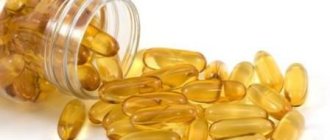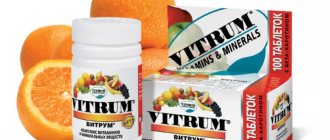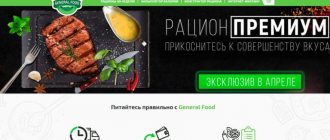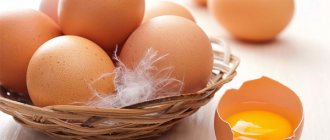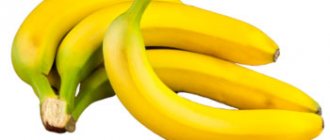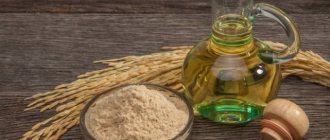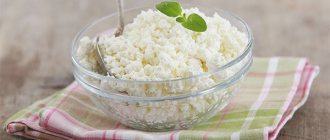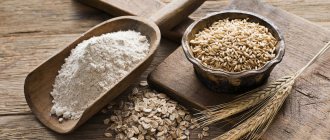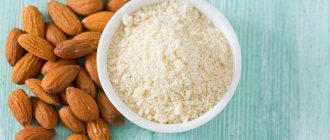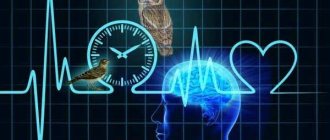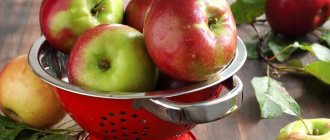Soybean, the health benefits and harms of which will be discussed in this article, is a herbaceous annual plant from the legume family. Soybeans were cultivated in Ancient China, in the 7th-6th centuries BC. Then we became acquainted with this culture in Japan and Korea. And now this plant is considered a traditional product of Asian countries. In Europe and America, people learned about soybeans already in the nineteenth century, and today this plant is widespread everywhere.
How does soybean grow? This is a bean, the average length of which is 4-5 centimeters, and the number of seeds is 2-3. The seeds are predominantly yellow, straw in color. However, there are green and black varieties. Soy has a neutral odor and taste. But it easily absorbs the smells and tastes of the products with which it is cooked.
Soy: health benefits and harms
Soy contains easily digestible vegetable protein, which has an almost identical amino acid composition to protein of animal origin. Therefore, soy products are preferred by vegans, vegetarians and those who, for various reasons, cannot consume animal products. Soy is also recommended for people with stomach ulcers, gastritis, diabetes, diseases of the cardiovascular system, and osteoporosis.
Soy also contains fiber, which is indigestible dietary fiber. They swell in the gastrointestinal tract and help eliminate toxic substances.
The beneficial substances contained in soy also include vitamins (carotene, ascorbic acid, pyridoxine, folic acid), minerals (Na, P, Fe, Zn, Mg, Ca, K). Also polyunsaturated fatty acids, the substance genistein, which prevents oncopathologies of the large intestine. Soybeans contain raffinose and stachyose, which stimulate the growth of bifidobacteria in the intestines, thereby preventing dysbacteriosis. This product also contains isoflavones; these substances belong to the group of phytoestrogens and are able to compensate for the insufficient amount of their own estrogens in women during the menopausal period. Beans also contain lecithin, which helps optimize fat metabolism. Thus, the benefits of soy for the body are determined by its rich composition.
Interesting fact! In Asia, soy is considered a product that slows down the aging process. Long-livers eat it several times a week. 100 grams of soybeans contain 34.9 grams of protein, 17.3 grams of fat, 17.3 grams of carbohydrates, and the calorie content is 381 kcal.
Despite the diverse beneficial properties of soy, there are also contraindications. And some restrictions on its consumption. They are as follows:
- Soy is a strong food allergen. People prone to hypersensitivity reactions should use foods containing soy with caution. Soy should not be included in children's diets due to the risk of allergic reactions.
- Soy can provoke the formation of oxalate stones in case of urolithiasis.
- When consuming soy, skin pathologies (eczema, dermatitis), as well as conjunctivitis and asthma, can develop.
- A large amount of isoflavones in the composition can increase the likelihood of miscarriage and also have a negative effect on the development of the fetal nervous system.
The Rise, Introduction, Fall of Soy: Isoflavones Cannot Be Executed
Isoflavones plague the reputation of soy. Everything is ambiguous: research is carried out and carried out, isoflavones are broken down into atoms, fried and boiled, sprayed and incinerated, fed to unfortunate mice and hares. The reason for this biased attitude is the connection with oncology, which worries the world.
Isoflavones are phytoestrogens. Phytoestrogens and human estrogens are similar in structure, but the former are less active and their action is unobtrusive. Isoflavones are anticarcinogens. They have metabolic properties and have a beneficial effect on the cardiovascular system, but the main thing (also controversial) is their effectiveness in the fight against osteoporosis and the components of menopausal syndrome in women. The controversial part is the effect of these substances on the development of cancerous tumors, including the breast.
Soy triumph
The best minds on the planet continue to break spears in the debate about the dangers and benefits of soy. Sensational revelations and discoveries appear periodically. And the beginning was harmless: in the 1970s, fashion came to the East, at the same time vegetarians raised their flags, and the rise of soybeans began. A high content of proteins in them was discovered that could replace meat for humans (the ambiguous properties of proteins were not particularly discussed - we will assume that they did not know, although it is doubtful).
In the 1990s, it was noted that Asian women were less fat and less likely to suffer from diabetes - apparently due to the permanent absorption of soy. For some reason, the economic situation in the Asian region was not taken into account: if you shower Asian women with fast food and sweets, it remains to be seen what will come of them. The soybean triumph took place. Beans have become the basis of a healthy diet according to the formula “1.5 glasses of soy milk per day, and everything will be fine.”
In 1995, the University of Kentucky shocked an already astounded world with its announcement of the incredible ability of soy to reduce cholesterol levels by 13% when consuming just 50 grams of beans daily. The United States rose from its knees (which had fallen under the weight of cholesterol), and, as happens in the United States, furiously began introducing soy into the diet of the whole world, excluding the Asian region, where it had been eaten for thousands of years. Soybeans overnight acquired the status of a medicine - no more, no less. Tofu and Miso have found their way onto restaurant menus and into people's refrigerators.
Russia was sleeping as usual. We actively cultivated soybeans (they started immediately after the war), but they didn’t hang them on posters, they didn’t fill the shelves with them, they quietly stuffed them into sausages instead of meat, which had no effect on the statistics of the development of cancer and did not simplify the fight against menopausal syndrome. Maybe because “menopausal hysteria” was equated with an insult, and Russian women controlled themselves with and without soy. The falling Iron Curtain shook the situation: at the beginning of the 2000s, the squall finally reached the bear. The Nutrition Research Institute dissected soybeans, studied them thoroughly and approved everything that could be squeezed out of them.
The world has spent tons of money and a couple of decades understanding the behavior of isoflavones in the human body. The catch was the lack of confidence in the identity of the female body’s reaction to estrogens and isoflavones. The problem is that it is estrogens (or rather, their excess) that provoke the development of cancer of the breast and reproductive system. Mature mice solved the problem by showing that isoflavones block the activity of estrogens (however, the effect of isoflavones themselves in the same direction was not taken into account). Soy will save the world from cancer! Flags fluttered, slogans sounded, grants rang in the accounts of the research institute.
Medicinal soybean continued its victorious march around the world. Asian cuisine has become a hit. Adding gasoline to the fire is the memory of Australian farmers who noticed back in the 1940s that sheep fed red clover (also containing isoflavones) were much more fertile than sheep deprived of this joy. The scientific world howled with triumph and continued to torture soy and its isoflavones for their protective properties (this is the function that substances in plants perform - they protect against parasites).
There was an error
In the last couple of decades, the status of a panacea was given to many products - except that water was not touched, although these were only scientists: pseudo-scientific mediocrities and charlatans conjured over water. Having climbed onto the pedestal, the winner did not sit on it for even six months: another medicinal cucumber/tomato overthrew the eggplant/spinach, motivating the revolution by the fact that there was a mistake. My eyes flickered, the meaning of what was happening slipped away, and buckwheat became dearer.
This cup has not passed away. Just when they weren’t expecting it, a fall happened - the first blow came from soy’s ability to lower cholesterol levels (we’re not even saying that it’s advisable to regulate it, and not just stupidly reduce it). It turned out that it was significantly overestimated - we can’t talk about any 13%, and the figure barely reaches 3%.
The American Heart Association was the first to try to overthrow soy. Her dirty work was continued by William Helferich (University of Illinois). He did not assume what would happen if... he did not study isoflavones in simulated situations, but instead injected genistein into mice already suffering from cancer. Everyone got worse - the tumors increased. The same thing happened in the Petri dish.
Despite the debunking of the myth about the enormous reduction in cholesterol levels, soy was still revered as manna from heaven. Helferich was laughed at. But science is such a science: the results of research poured in one after another - submissive and peaceful isoflavones after some time lost their docile character and began to behave ambiguously: they both helped (prevented the formation of a tumor) and poisoned them even worse (Helferisch’s mice were all unlucky ).
The debate did not subside - in 2006, a specific “orgy” began: two mutually exclusive publications were published in the journal of the US National Cancer Institute. It was [censored]. And today, products labeled “Soy Free” are sold at incredible prices just because of the absence of the ubiquitous product.
Do you think this will rid the world of total soybean occupation? Don't even hope. Soybean is capable of taking on the color, taste, and smell of the product into which it is introduced. Moreover, the parasite costs much less than the donor. Even the fears of opponents of genetic engineering do not save soybeans, although almost all soybeans are modified. But the harm of GMOs has not yet been proven (and there is none, it’s illogical), but something needs to be put in sausages, and the choice between soy and pork fat is obvious. Defenders of genetic changes make a compelling argument: either soybeans will grow using chemicals, which is definitely harmful, or at the genetic level they will become invulnerable and fertile like cockroaches, which is not exactly harmful.
The position of Russian science is ridiculous: isoflavones are great, suitable for baby food, but dietary supplements with isoflavones are only prescribed by a mammologist (!). An employee of the Nutrition Research Institute Clinic, Yulia Chekhonina (candidate of medical sciences), assured Vogue that 4 glasses of soy milk will not cause harm, since a third (25 g) of the protein consumed should be of plant origin.
They recommend consuming minimally processed soy that retains its benefits, and we are back to anti-nutrient components that are inactivated only by heat treatment... a vicious circle. Meanwhile, regular beans, which are eaten just like that (they are delicious), contain exactly 21 g of vegetable protein per 100 g. Even a vegetarian can easily do without soy and not drink liters of soy milk. And fans of isoflavones can do without soy. Farmers and manufacturers cannot: it is profitable for them to grow GM soybeans, it is profitable for them to add soybeans to sausages, it is profitable for them to make pasta from it. While it’s profitable, don’t care about the anti-nutritional components that disfigure the human body - it’s better to study soy isoflavones and ignore Helferich’s dead mice.
How soy products are prepared
If you wish, you can eat soy and products based on it, but preference should be given to:
- whole soybeans;
- fermented foods (soy miso, tofu, natto, tempeh, naturally fermented soy sauce).
Soy miso is a fermentation product of soybeans that is produced in the form of a thick paste. It is used as a base for making miso soups.
Tofu is made by curdling the protein in soy milk through a process of heating or filtering. Magnesium chloride, calcium sulfate or citric acid are used as a coagulant. After rolling, tofu is most often pressed. The product has a neutral taste.
Natto is prepared from small beans soaked for 12-20 hours. Next, the hay stick - natto-kin - is added to the beans and left to ferment for a day at a temperature of 40 degrees Celsius. In Japan, natto is often eaten for breakfast along with rice, adding soy sauce, daikon, and green onions.
Tempeh is made from whole soybeans. They are pre-soaked, then boiled, but not until fully cooked. Then vinegar and a culture of Rhizopus oligosporus are added. The beans are fermented for 24 hours at a temperature of 30 degrees Celsius. Most often, tempeh is cut into pieces and fried. It is served as part of side dishes and soups, as well as as an independent dish.
Nutrients in Soybeans
Soybeans are primarily composed of protein, but also contain large amounts of carbohydrates and fat.
100 grams of boiled soybeans contain:
- Calories: 173
- Water: 63%
- Protein: 16.6 grams
- Carbohydrates: 9.9 grams
- Sugar: 3 grams
- Fiber: 6 grams
- Fat: 9 grams
- Saturated: 1.3 grams
- Monounsaturated: 1.98 g
- Polyunsaturated: 5.06 g
- Omega-3: 0.6 grams
- Omega-6: 4.47 g
Squirrels
Soybeans are one of the best sources of plant protein. The protein content of soybeans is 36–56% of dry weight. One cup (172 grams) of cooked soybeans contains about 29 grams of protein.
The nutritional value of soy protein is good, although the quality is not as high as animal protein ().
The main types of protein in soybeans are glycinin and conglycinin, which account for approximately 80% of the total protein content. These proteins may cause allergic reactions in some people (,).
Soy protein consumption was associated with a small reduction in cholesterol levels (, , ).
Fats
Soybeans are classified as oilseeds and are used to produce soybean oil.
Fat content is approximately 18% dry weight - mostly polyunsaturated and monounsaturated fatty acids with a small amount of saturated fat.
The predominant type of fat in soybeans is linoleic acid, accounting for approximately 50% of the total fat content.
Carbohydrates
Low in carbohydrates, soybeans have a very low glycemic index (GI), which is a measure of how foods affect blood sugar levels after a meal ().
This low GI makes soybeans suitable for people with diabetes.
Read also: tofu and tempeh - what are the differences
Cellulose
Soybeans contain sufficient amounts of soluble and insoluble fiber. Insoluble fibers are mainly alpha-galactosides, which can cause flatulence and diarrhea in sensitive people (,).
Alpha-galactosides belong to a class of fibers called FODMAPs, which may increase symptoms of irritable bowel syndrome (IBS).
Despite causing unpleasant side effects in some people, the soluble fiber in soybeans is generally considered beneficial.
They are fermented by bacteria in the colon, resulting in the formation of short-chain fatty acids (SCFAs), which can improve gut health and reduce the risk of colon cancer (, ).
Thus, the fiber in soybeans is beneficial for some and harmful for others. If you have intestinal problems, it is recommended to limit your soy intake.
Soybeans are a very rich source of vegetable proteins and fats. Moreover, their high fiber content is good for your gut health.
Vitamins and minerals
Soybeans are a good source of various vitamins and minerals, including:
- Molybdenum. Soybeans are rich in molybdenum, an essential micronutrient found primarily in seeds, grains and legumes ().
- Vitamin K1. The form of vitamin K found in legumes is known as phylloquinone. It plays an important role in blood clotting ().
- Folate. Also known as vitamin B9, folate has various functions in the body and is considered especially important during pregnancy ().
- Copper. Dietary copper intake is often low in Western populations. Deficiency may have adverse effects on heart health ().
- Manganese. The trace element is found in most food and drinking water. Manganese is poorly absorbed from soybeans due to the high content of phytic acid ().
- Phosphorus. Soybeans are a good source of phosphorus, an essential mineral widely found in the Western diet.
- Thiamine. Also known as vitamin B1, thiamine plays an important role in many body functions.
Soybeans are a good source of several vitamins and minerals, including vitamin K1, folate, copper, manganese, phosphorus and thiamine.
Other plant compounds
Soybeans are rich in a variety of bioactive plant compounds, including (, , , ):
- Isoflavones. The isoflavone family of antioxidant polyphenols has a variety of health effects.
- Phytic acid. Phytate , or phytic acid, found in all plant seeds, impairs the absorption of minerals such as zinc and iron. Levels of this acid can be reduced by boiling, sprouting or fermenting the beans.
- Saponins. Saponins are one of the major classes of plant compounds in soybeans that have been found to lower cholesterol levels in animals.
Soy isoflavones
Soybeans contain higher amounts of isoflavones than other common foods ().
Isoflavones are unique phytonutrients that resemble estrogen, the main female sex hormone. They actually belong to a family of substances called phytoestrogens (plant estrogens).
The main types of isoflavones in soy are genistein (50%), daidzein (40%) and glycitein (10%) ().
Some people have a special type of gut bacteria that can convert daidzein into equol, a substance thought to be responsible for many of the health benefits of soybeans. People whose bodies can produce the same are expected to benefit far more from consuming soy than those whose bodies cannot (). The percentage of such people is higher in Asian populations and among vegetarians than in the general Western population (,).
Soybeans are a rich source of various bioactive plant compounds, including isoflavones, saponins and phytic acid. Isoflavones, in particular, mimic estrogen and are responsible for many of the beneficial and harmful health effects of soybeans.
Properties of soy that should be considered when choosing it
When selecting soybeans, it is necessary to inspect the product - it should be free of mold, dark spots, signs of caking and rotting. The beans should be dry, clean, and their shell should be dense and shiny. Soybeans are sold in stores in packaged packages, similar to beans or peas. There should be nothing foreign in the bag of beans - stems and other plant debris. Soy must be stored in a cool, dry place, away from foods that have a strong aroma. Recommended storage containers are glass or ceramic with a ground-in lid.
Soybeans can be sold as okara, a moist, curd-like mass with a yellowish tint. It is formed after boiling and grinding pre-soaked soybeans. Okara has no taste or aroma; it serves as the basis for many dishes - cutlets, bread, desserts. This soy mass can be stored in the refrigerator without loss of taste and beneficial properties.
When choosing soy and soy-based products, you should consider the above recommendations in order to get maximum benefits for the body and not harm your health.
Thanks for sharing with your friends!
- 1
Soy flavor
Raw soybeans are not eaten, and products made from them are essentially tasteless.
The paradox is that this variety of legumes has practically no taste of its own. She's no good. It is somewhat reminiscent of beans, but beans, unlike their popular relative, have a brighter taste.
If you soak a few soybeans and taste them, you will be disappointed - you won't taste anything! Well, then what is so impressive about this product? Yes, this is exactly what conquers!
The fact is that soybeans and products made from it easily acquire the taste and aroma of everything they come into contact with. That's why soy sausages, schnitzels, and cheeses are so popular. Meat is also essentially tasteless. Have you tried cooking broth without salt and then chewing what was cooked in it? Fresh tires, and that’s all!
So the soybean, beloved by many, “spreads its tail” and becomes tasty only due to spices and additives. And what difference does it make whether you make minced meat from expensive meat or from cheap beans? The main thing is the spices.
